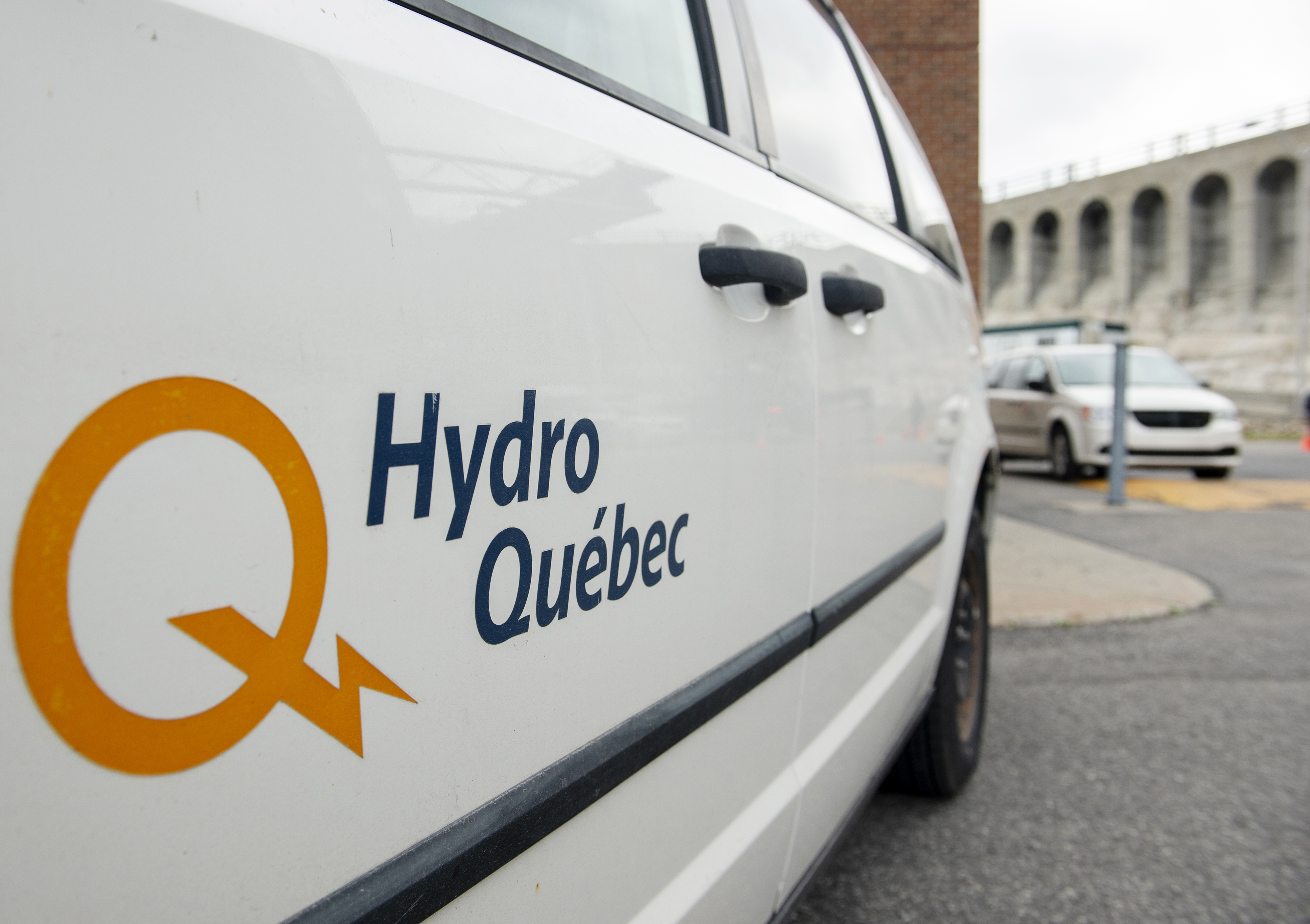Massachusetts energy market ready for jolt of Canadian hydropower
November 21, 2025

Massachusetts energy market ready for jolt of Canadian hydropower
Avangrid has said energy headed for New England’s grid is enough to power more than a million homes in the region and estimates $3 billion in net benefits for Massachusetts ratepayers.

A dam at the Hydro-Quebec Carillon hydroelectric generating station in Saint Andre d’Argenteuil, Quebec, Canada, on Tuesday, Aug. 26, 2025.
In a bright spot for the state’s climate agenda during a year marked by stalled clean energy projects, the long-delayed transmission line that will deliver Canadian hydropower to New England is on track to send 1,090 megawatts of electricity into Massachusetts by the end of 2025.
Avangrid, the developer of the New England Clean Energy Connect project, announced Wednesday that the Maine Department of Environmental Protection approved the last required permit to bring hydropower into the region from Hydro Quebec.
“This puts Avangrid on track to energize the project following testing and commissioning, which is scheduled to conclude by the end of the year,” the company said, calling the milestone the culmination of “years of legal and regulatory hurdles.”
Secretary of Energy and Environmental Affairs Rebecca Tepper confirmed that timeline, answering “yes” when asked at the State House Thursday if the project will be completed by the end of the year. It will unlock a piece of the state’s clean-energy strategy nearly a decade after lawmakers first authorized the procurement of large-scale hydropower in 2016.
The project’s breakthrough comes as other pillars of the state’s climate plan face delay after delay.
Offshore wind contracts remain in limbo due to federal permitting freezes under the Trump administration and unstable power-purchase agreements. Interconnection bottlenecks continue to stall new solar and storage projects. And two major offshore wind projects — SouthCoast Wind and New England Wind — remain stuck in regulatory uncertainty. Only Vineyard Wind 1 is currently delivering power.
As key stakeholders meeting Tuesday, Massachusetts Gov. Maura Healey asked, “why would you want to kill tens of thousands of jobs?”
The NECEC transmission line is the product of a long-running effort to tap Canadian hydropower — on paper, a simple swap of abundant clean energy for a region hungry for non-fossil fuel baseload supply.
But because Massachusetts does not border Canada, the state has been forced to rely on cooperation from neighbors. After New Hampshire rejected a proposed route in 2018, then-Gov. Charlie Baker turned to Maine, where Central Maine Power, an Avangrid subsidiary, proposed a 145-mile line that would snake from the Canadian border to an interconnection point in Lewiston.
What followed was a years-long political and legal brawl: conservation concerns, fights over the Appalachian Trail crossing, a statewide ballot question in Maine that temporarily halted construction and court battles over whether Avangrid had vested rights to resume the work. Even after a jury sided with the company in 2023, vegetation began to regrow in cleared areas, and construction costs ballooned.
More hydropower news
Those delays have had real implications for Massachusetts.
This January, state regulators approved a settlement with Eversource, National Grid and Unitil, where the utilities agreed to pay more to cover a cost increase tied to the delays imposed by the 2021 referendum — which the Department of Public Utilities found added $521 million in 2017 dollars to the project cost.
Utilities can pass the higher costs along to their ratepayers under a law Gov. Maura Healey signed in December 2023 that sponsors pitched as necessary to get the project back on track.
In total, utilities may recover $1.4 billion over 20 years from ratepayers, the Portland Press Herald reported. Still, regulators insist the long-term contracts remain cost-effective, citing nearly $4 billion in avoided market costs over two decades.
Despite the political bruising, the line will carry 1,200 megawatts of baseload hydropower to the New England grid, of which Massachusetts utilities contracted 1,090 megawatts. Avangrid has said energy headed for New England’s grid is enough to power more than a million homes in the region.
According to Avangrid, the hydropower could reduce regional carbon emissions by up to 3.6 million metric tons per year, the equivalent of removing 700,000 cars from the road.
The company estimates $3 billion in net benefits for Massachusetts ratepayers. That translates into monthly bill reductions of roughly $1.50 for many households, per the DPU settlement from earlier this year.
“This achievement is the culmination of years of hard work, collaboration, and perseverance,” Avangrid CEO Jose Antonio Miranda said. “We have secured every permit, met every regulatory requirement, and overcome significant challenges because we believe we must address the urgent need for reliable energy at a time of rising demand. Today, we stand ready to deliver on that promise.”
Phelps Turner, director of clean grid at the Conservation Law Foundation, said the project “will lower electricity costs throughout the region, which is significant, given the current affordability crisis in New England.”
“In addition to providing affordable energy, the project will also be providing much-needed reliable energy to the region,” Turner said. “The NECEC has already generated many other positive benefits, including for local communities, and will improve air quality by reducing pollution from fossil-fueled power plants. It will also very likely reduce the need for gas power plants to run on cold winter days when gas is in short supply and expensive, thus saving customers money and reinforcing the lack of need for gas pipeline expansion in the region.”
Healey, whose administration inherited the project after years of controversy, hailed the progress.
“It’s great to see the NECEC line on track to finish construction by the end of this year,” she said in a statement. “This transmission line will deliver affordable, stable power from our partners in Canada to our residents and businesses. More energy means lower costs.”
Healey has cast her administration’s strategy as an “all-of-the-above” approach.
At an investor conference in Boston this month, she emphasized the need for reliability and diversity: “Wind, solar, battery storage, energy efficiency — we’ve got hydro coming in from Canada later this year. We’ve still got gas,” she said, noting her support for increased natural gas capacity coming into the state through the Algonquin Gas Transmission Pipeline.
Her comments underscore a growing sense among policymakers that the state cannot rely on clean energy alone — especially amid affordability concerns, federal uncertainty and regional grid constraints.
With offshore wind timelines slipping and solar deployment slowed by grid capacity issues, the infusion of Canadian hydropower represents one of the only major new clean-energy sources expected to reach Massachusetts in the near term. Meanwhile, the leader of the House’s energy committee moved this month to defang the state’s legally-binding 2030 clean energy targets, though House leaders have said they’re not pursuing that path, for now.
The project also offers something offshore wind does not: firm, around-the-clock electricity. As the state works to reduce fossil fuel reliance in its energy mix, and as heating and transportation electrify, the demand for reliable, non-intermittent capacity is rising quickly.
If the final testing proceeds as promised, the hydropower flow could begin before the year ends — the end to a long road for Massachusetts ratepayers who have already spent hundreds of millions to secure it, and for policymakers struggling to keep the state’s climate goals on track.
Search
RECENT PRESS RELEASES
Related Post





